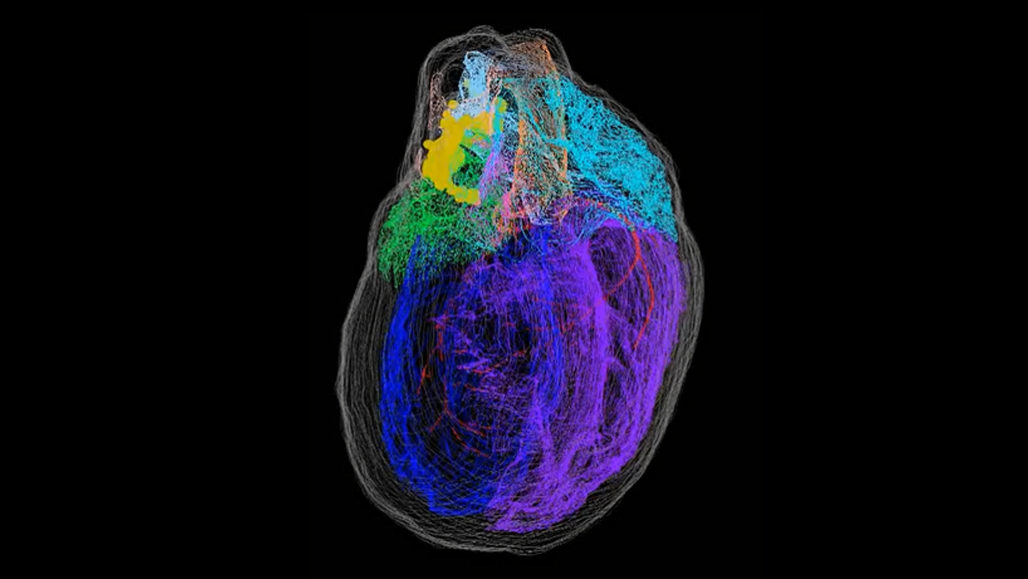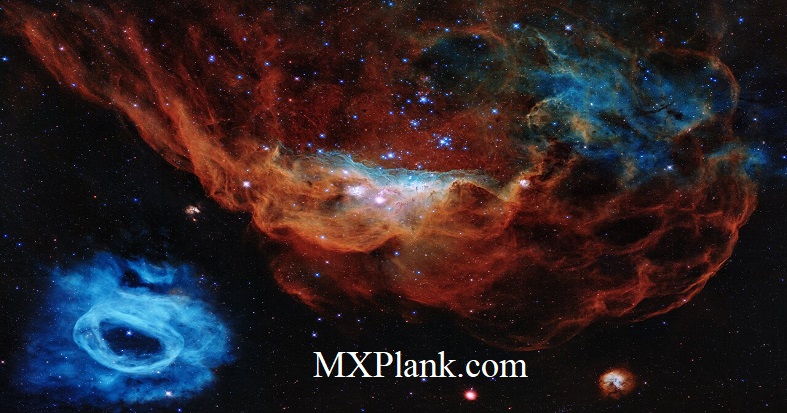
Nerve cells (yellow) that make up a heart's brain cluster around the top of this reconstructed rat heart, near where blood vessels enter and exit the organ. Other colors show the contours of distinct heart areas, such as the left atrium (green), right atrium (teal), left ventricle (blue) and right ventricle (purple).

This image is one of the most photogenic examples of the many turbulent stellar nurseries the NASA/ESA Hubble Space Telescope has observed during its 30-year lifetime. The portrait features the giant nebula NGC 2014 and its neighbour NGC 2020 which together form part of a vast star-forming region in the Large Magellanic Cloud, a satellite galaxy of the Milky Way, approximately 163 000 light-years away.

This new NASA/ESA Hubble Space Telescope image shows ghostly green filaments, lying within galaxy Mrk 1498. This filament was illuminated by a blast of radiation from a quasar - a very luminous and compact region that surrounds the supermassive black hole at the centre of its host galaxy.Its bright green hue is a result of ionised oxygen, which glows brightly at green wavelengths.

Centaurus A, also known as NGC 5128, is well known for its dramatic dusty lanes of dark material. Hubble’s new observations, using its most advanced instrument, the Wide Field Camera 3, are the most detailed ever made of this galaxy